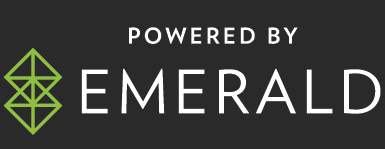By Jon Reilly, Akkio CEO and Co-Founder
The fastest path to AI performance gains isn’t through point solutions. It’s through partnering with experts to activate the intelligence and data you already have inside your walls.
That insight was on full display at Advertising Week. In our session, “Less A, More I: Accelerating Media Through Data Expertise,” featuring Matt Spiegel, EVP, TruAudience Growth Strategy, Transunion, and Jamie Seltzer, Global Chief Data & Technology Officer, Havas, the attendance told its own story: people are tired of the AI hype cycle. They’ve sat through enough vendors promising AI transformation. Now, they want results.
But saying “activate what you have” is easy. Understanding what that actually means — and why so few companies are doing it — is where the real conversation began.
The Intelligence You’re Ignoring
Your best planners have workflows that consistently deliver results. Your senior analysts have approaches that surface insights others miss. This institutional knowledge – the expertise that lives in Teams messages, gets passed through shadowing, and walks out the door when people leave – is your real competitive advantage.
Jamie said succinctly: “There are so many pockets of innovation, so many pockets of somebody built an agent that automated their workflow and someone else might find that interesting but how does that work?”
Intelligence exists everywhere, but it’s isolated, unstable, and often invisible. The natural response is to look outward and buy platforms that promise solutions. But that impulse is exactly that – impulsive.
Why Companies Keep Shopping Instead of Activating
If buying isn’t the answer, is building the solutions internally? Matt reframed the question: “You need a partner network. The chance that any one company is gonna solve all of the issues by themselves is pretty crazy.” But, he added, none of it works without a solid data foundation.
Most media companies haven’t mapped the intelligence they already have, let alone figured out how to scale it. They’re shopping for solutions to undefined problems. Activation isn’t glamorous — there’s no highlight reel for organizing client data — but without that foundation, AI tools underdeliver.
The Unglamorous Work that Actually Matters
Here’s the critical distinction: personal AI agents (where individuals automate their own work) are useful for learning, like driveways: custom, personal, helpful.
Production AI, however, is the interstate: high-volume, auditable workflows that many people can run. When someone leaves, another can step in because intelligence is encoded into infrastructure, not trapped in one head.
Jamie put it perfectly: “There has to be some governance and framework, but there also has to be room to innovate and grow locally.” The real challenge isn’t choosing between control and experimentation; it’s building systems that scale what works without killing creativity.
Building these systems requires understanding context. Ask a language model to act without context, and it’s like an uneducated analyst trying to do a job blind. Activation means capturing context so that workflows, data, and human expertise combine effectively.
Matt emphasized: “You can’t build AI at scale without the right data, governance, and training.” Jamie added: “If you don’t have the right data, organized and clean, it doesn’t matter if you build an AI agent. That’s where you start.”
Many media companies want AI to be the fuel, skipping messy data governance. Platforms that work know better: there is no AI without a data foundation.
What It Looks Like When You Get it Right
When we discussed use cases, Matt noted, if we surveyed this room, we’d get dozens of different answers. The possibilities are endless, but the pattern is consistent: leverage unique data to operationalize intelligence that already exists.
I saw this firsthand running marketing at my previous company. We needed to prioritize sales leads. Using our specific customer data, we built a model to sort leads by likelihood to convert. This delivered a 30% lift, because we operationalized existing intelligence. This insight drove me to build Akkio, the AI workflow platform that helps media companies leverage their data effectively.
Matt offered a framework: Are you driving efficiency and faster cycles, or increasing predictability and better outcomes? Both work, but the key is focusing on your actual workflows and actually doing it, rather than continuing to shop for point solutions.
The Window is Closing
Matt added a sobering thought: economic pressures will force hard choices in the next 12–36 months. Companies that haven’t activated existing assets will face a stark decision: double down on expensive tools that underperform, or abandon AI efforts entirely.
Those who activate first compound their advantages: using AI on problems they understand, with data they’ve already collected, in workflows their teams trust. As Jamie emphasized, technology serves people, it doesn’t replace them.
But institutional knowledge becomes scalable only when paired with systems, governance, and infrastructure that turn individual brilliance into organizational capability.
Activate Your Unique Data
Your next competitive advantage isn’t in an AI point solution. It’s in partnering with AI experts who help you unlock the data and institutional knowledge unique to your media company.
At Advertising Week, the message from the room was clear: people are done with promises. They want results. The media companies seeing real progress with AI aren’t chasing every new tool. They’re choosing platforms that help them scale the intelligence, workflows, and data they already have. That’s Less A, More I in action, less hype, more real impact.











